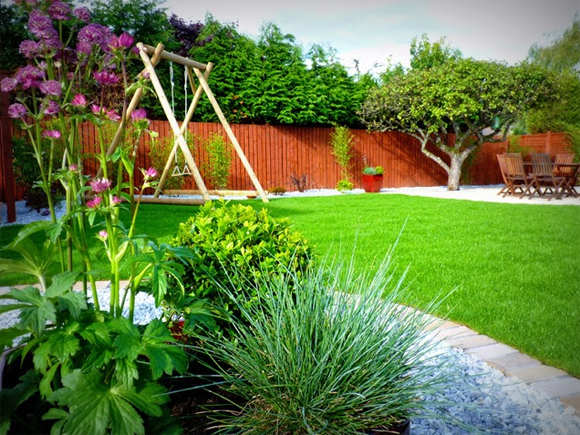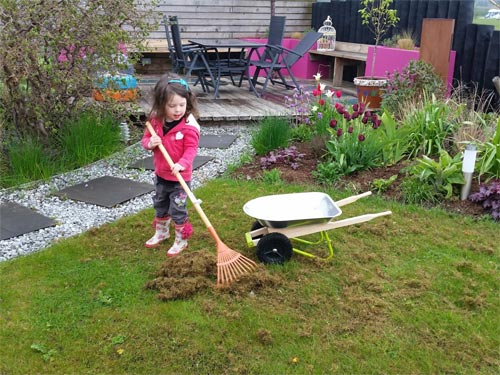Not a Turf Job…
Thursday, 02 April 2015
There is plenty of choice for creating a new lawn in your garden, from grass seed or meadow grass to turf or artificial grass. By far the most common choice from our clients is the instant result you get from laying new turf. Here are a few tips if you want to create your own piece of green paradise in your garden…

Newly laid turf can help transform your garden
Timing
Creating a new lawn from scratch is easy if you pick the right time of year and prepare the site thoroughly. Turf will quickly establish on soil that is warm and moist – autumn is perfect as new turf will also be regularly watered by winter rain. Turf can also be laid in spring, but avoid this time of year if you live in an area hit by a hosepipe ban as new turf needs frequent watering to prevent grasses from being put under stress.
Buying turf
A standard piece of turf will cover about one square metre and is best ordered from a reputable supplier who can deliver straight to your door. Choose good quality turf raised from seed – it is available in several grades, which suit different situations: domestic turf contains dwarf perennial ryegrass and is very hard wearing, while fine turf, contains grasses such as bents and fescues and is better for a showpiece landscaping project. In areas of low rainfall, try drought-tolerant turf (not much of an issue for us here in Scotland!) When your turf arrives, stack rolls in a shady spot and if they appear dry, sprinkle with water. Aim to lay the turf within a day of delivery – if laying is delayed, open the rolls and water. Don’t worry if they turn slightly yellow, they should quickly green-up once laid.

Inter-locking circles of lawn looks great
Laying turf
Prepare the soil by skimming off any old grass, removing large stones and weeds, and then roughly levelling by flattening humps and filling hollows. If you have poor quality soil you will need to excavate some of the soil and/or add in soil improver to ensure good drainage in your new lawn. Fork over the site and rake level to leave a fine finish. Firm the soil by walking over, placing weight on your heels and rake again. Sprinkle a granular fertiliser over the soil and lightly rake into the soil and water well. Use boards/planks to kneel on as you are laying your turves so you don’t damage or make indents in your new lawn. Lay your first row along a straight edge if possible, slowly unrolling turf to avoid damaging. Butt each piece up closely to the last and ensure good contact with the soil by tamping down firmly with the back of the rake. Lay the next row, making sure the pieces of turf are pushed right up to the first row. Stagger this and subsequent rows in a brickwork pattern until the area has been covered. Lay turf so it runs beyond the area of your new lawn and trim edges with a straight edged board and a half-moon cutting tool. After cutting, scoop up handfuls of soil and put under the edges of the turf to prevent it drying out. If possible set up a sprinkler to water or soak thoroughly with several doses from a watering can.

Scarify your lawn to get rid of the moss
Aftercare
Try not to walk on newly laid turf until it has rooted into the soil, which could take several weeks. Keep all children and pets off your new lawn during this time too. If the weather is mild over winter the grass will begin to grow. Trim it lightly, keeping the mower blades set high.
If you need advice on any aspect of creating a new lawn or would like a quote to have your garden turfed, please get in touch.
Best wishes,
All at Vialii
















